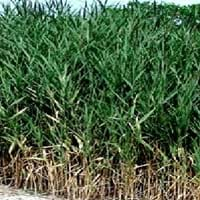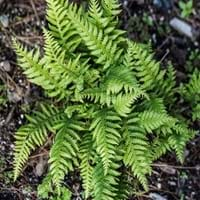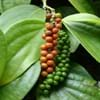Life Span
Perennial
Perennial
Origin
Southern Europe
Eastern Asia
Types
Arundo, Carrizo
Not Available
Habitat
Saline Soils, Sandy areas
Damp shady woods, Wet ground, Wet lands
USDA Hardiness Zone
6-10
7-8
Sunset Zone
3a, 3b, 4, 5, 6, 7, 8, 9, 10, 11, 12, 13, 14, 15, 16, 17, 18, 19, 20, 21, 22, 23, 24
4
Habit
Upright/Erect
Arching/Fountain-shaped
Flower Color
Not Available
Non Flowering Plant
Flower Color Modifier
Bicolor
Bicolor
Fruit Color
Not Available
Non Fruiting Plant
Leaf Color in Spring
Green, Gray Green
Light Green
Leaf Color in Summer
Light Green
Light Green
Leaf Color in Fall
Green, Gray Green
Light Green
Leaf Color in Winter
Green, Gray Green
Not Available
Leaf Shape
Linear
Pinnate
Plant Season
Spring, Summer, Fall, Winter
Spring, Summer, Fall
Sunlight
Full Sun
Full Sun, Partial shade
Growth Rate
Very Fast
Medium
Type of Soil
Clay, Loam, Sand
Clay, Loam
The pH of Soil
Acidic, Neutral, Alkaline
Acidic, Neutral
Soil Drainage
Average
Average
Bloom Time
Late Summer, Early Fall, Fall, Late Fall
Fall, Spring, Summer
Tolerances
Wet Site, Drought, Salt
Wet Site
Where to Plant?
Ground
Container, Ground, Pot
How to Plant?
From Rhizomes, Stem Planting
From Rhizomes
Plant Maintenance
Medium
Medium
Watering Requirements
Requires a lot of watering
Water Deeply, Water in morning to avoid prompting diseases, Water occasionally, Water slowly, and allow to dry completely between soakings
In Summer
Lots of watering
Lots of watering
In Spring
Moderate
Moderate
In Winter
Average Water
Average Water
Soil pH
Acidic, Neutral, Alkaline
Acidic, Neutral
Soil Type
Clay, Loam, Sand
Clay, Loam
Soil Drainage Capacity
Average
Average
Sun Exposure
Full Sun
Part sun, Partial shade, Partial Sun
Pruning
Do not prune during shooting season, Prune after harvesting, Remove damaged leaves, Remove dead branches, Remove dead leaves
Remove damaged leaves, Remove dead branches, Remove dead leaves
Fertilizers
All-Purpose Liquid Fertilizer, Fertilize in early spring
All-Purpose Liquid Fertilizer, Apply N-P-K
Pests and Diseases
Not Available
Leaf curl, Leaf rust, Red blotch, Scale, Scale insects
Plant Tolerance
Drought
Drought, Humidity, Rocky Soil, Shade areas, Wet Site
Flower Petal Number
Single
Single
Foliage Texture
Bold
Medium
Foliage Sheen
Matte
Matte
Attracts
Bees, Birds, Hummingbirds
Butterflies
Allergy
allergic conjunctivitis, flushing of face, wheezing
Not Available
Aesthetic Uses
Beautification, Bonsai
Bog Garden, Borders
Beauty Benefits
Making cosmetics, Skin cleanser
Not Available
Environmental Uses
Agroforestry, Air purification, Nesting sites for birds, No fertilizer, pesticides, or herbicides needed, Prevent Soil Erosion, Shadow Tree, soil stabilisation
Air purification
Medicinal Uses
Diaphoretic, Diuretic, Emmoiliant
Not Available
Part of Plant Used
Bark, Sap
Not Available
Other Uses
Basketary, Showy Purposes, Used in making musical instruments, Wood is used in construction
Not Available
Used As Indoor Plant
Sometimes
Yes
Used As Outdoor Plant
Yes
Yes
Garden Design
Container, Cutflower, Dried Flower/Everlasting, Feature Plant, Mixed Border, Screening / Wind Break, Tropical, Water Gardens
Bog Garden, Groundcover, Mixed Border, Rock Garden, Wall, Tropical
Botanical Name
ARUNDO donax
THELYPTERIS decursive pinnata
Common Name
Giant Reed
Beech Wood Fern
Winged Beech Fern
In Hindi
नरकट
Japanese Beech Fern
In German
Pfahlrohr
Japanische Buche Fern
In French
Arundo donax
Japanese Beech Fern
In Spanish
Arundo donax
Helecho de haya japonesa
In Greek
Arundo donax
Ιαπωνικά Οξιά Fern
In Portuguese
Cana-do-reino
Japonês Beech Fern
In Polish
Lasecznica trzcinowata
Japoński Buk Fern
In Latin
Arundo donax
Phlox Italica
Phylum
Angiosperms
Angiosperms
Class
Liliopsida
Polypodiopsida
Order
Cyperales
Polypodiales
Family
Poaceae
Thelypteridaceae
Clade
Commelinids
Not Available
Tribe
Not Available
Not Available
Subfamily
Not Available
Not Available
Number of Species
Not Available
Not Available
Season and Care of Giant Reed and Japanese Beech Fern
Season and care of Giant Reed and Japanese Beech Fern is important to know. While considering everything about Giant Reed and Japanese Beech Fern Care, growing season is an essential factor. Giant Reed season is Spring, Summer, Fall and Winter and Japanese Beech Fern season is Spring, Summer, Fall and Winter. The type of soil for Giant Reed is Clay, Loam, Sand and for Japanese Beech Fern is Clay, Loam while the PH of soil for Giant Reed is Acidic, Neutral, Alkaline and for Japanese Beech Fern is Acidic, Neutral.
Giant Reed and Japanese Beech Fern Physical Information
Giant Reed and Japanese Beech Fern physical information is very important for comparison. Giant Reed height is 18.00 cm and width 150.00 cm whereas Japanese Beech Fern height is 90.00 cm and width 30.50 cm. The color specification of Giant Reed and Japanese Beech Fern are as follows:
Giant Reed flower color: Not Available
Giant Reed leaf color: Green and Gray Green
Japanese Beech Fern flower color: Non Flowering Plant
- Japanese Beech Fern leaf color: Light Green
Care of Giant Reed and Japanese Beech Fern
Care of Giant Reed and Japanese Beech Fern include pruning, fertilizers, watering etc. Giant Reed pruning is done Do not prune during shooting season, Prune after harvesting, Remove damaged leaves, Remove dead branches and Remove dead leaves and Japanese Beech Fern pruning is done Remove damaged leaves, Remove dead branches and Remove dead leaves. In summer Giant Reed needs Lots of watering and in winter, it needs Average Water. Whereas, in summer Japanese Beech Fern needs Lots of watering and in winter, it needs Average Water.





